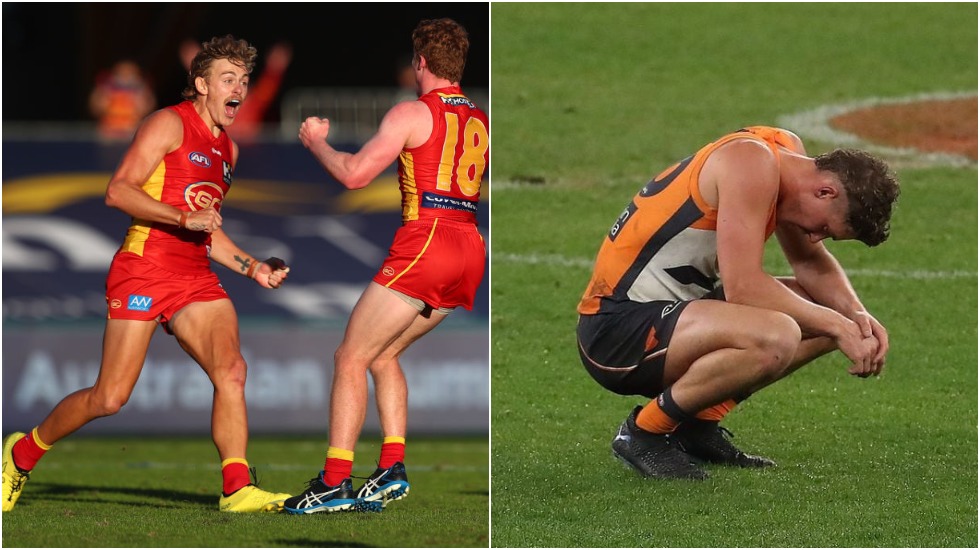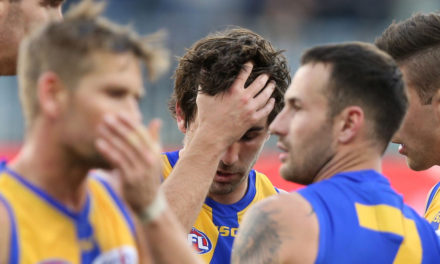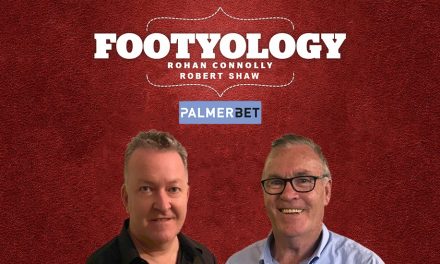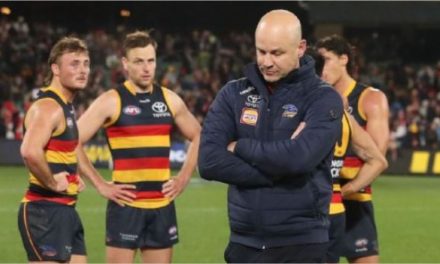At left, Gold Coast pair Hugh Greenwood and Matt Rowell, right, dejected Giant Harry Perryman after GWS’s loss to Sydney.
Given the pandemic sweeping the globe, it seems almost superfluous to observe how quickly things can change in life, let alone football.
What’s different about the following comparison, however, is that the ramifications of the insidious coronavirus haven’t actually even played a part. More just one legislative stroke of a pen, a couple of recruits, and a bit more experience under the belt.
It concerns the AFL’s two newest franchises, Gold Coast and Greater Western Sydney, and already the picture looks dramatically different to how it appeared only 12 months ago.
It was this time last year that the hapless Suns approached the AFL for special assistance after another wretched season in which they had finished bottom of the ladder with just three wins, losing their last 18 games straight. The Giants, meanwhile, were preparing for their fourth consecutive finals campaign.
Though beginning a year later, GWS seemed to epitomise just how a new club should go about its business in a list development sense. Gold Coast, having lost three former club captains in two off-seasons and a host of talent besides, most recently Jack Martin, provided the perfect contrast.
Indeed, so forlorn looked the Suns’ circumstances not only as a football team but an entire club, that the commentaries calling for the entire operation to be scrapped and relocated to Tasmania became almost a daily occurrence.
Just two days after GWS had appeared in their first Grand Final, the Suns were awarded priority picks at the AFL draft for the next three years, expanded academy player access and an increased rookie list of up to 10 players. It was clearly a last roll of the dice.
Incredibly, only 12 months down the track, critics may soon be asking whether the AFL’s largesse may have been a tad too generous, such has been not only the Suns’ on-field improvement, but the longer-term goals now actually visible on the horizon.
No, they’re not necessarily reflected in ladder terms. In fact, with five games left, Gold Coast are still only one win further advanced than last year. But this really is one case where superficial appearances can be deceptive.
Last year, Gold Coast’s average losing margin was 47 points. They completely fell apart towards the end of the season, losing six of their last eight games by 69 points or more. In 2020, the average losing margin is just 27 points, and there’s been a draw and two defeats by under a kick.
Speaking of appearances deceiving, though, perhaps for GWS they’ve been operating as a false form of flattery.
So impressive was the Giants’ run through last finals series (until the capitulation to Richmond on Grand Final day) that some predictions of their continued rise may have been based on, relatively speaking, a brief moment rather than the bigger picture.
PLEASE HELP US CONTINUE TO THRIVE BY BECOMING AN OFFICIAL FOOTYOLOGY PATRON. JUST CLICK THIS LINK.
GWS did, after all, finish only sixth on the ladder going into last September with 13 wins. Just two games out from finals, they were smashed by 10 goals in successive weeks, by Hawthorn and the Western Bulldogs.
The Giants emphatically reversed that Bulldog belting in the elimination final. But they won their way on to the Grand Final stage with two subsequent squeaks over the line by an aggregate of just seven points. It was hardly the form which suggested a colossus was emerging.
In that context, their spluttering 2020 perhaps shouldn’t be an enormous shock. The Giants, with games remaining against Fremantle, Carlton, Adelaide, Melbourne and St Kilda, are still every chance to make finals again. But what about after that?
The line about GWS being a ‘Ferrari’ is still popular. But depreciation is looming quickly.
The Giants now have the fourth-oldest list in the AFL, seven players on their books — Heath Shaw, Shane Mumford, Sam Jacobs, Sam Reid, Matt DeBoer, Callan Ward and Lachie Keeffe — older than 30, which will become eight on Sunday, when Phil Davis has his birthday.
That’s in stark contrast to Gold Coast, which has the youngest, least-experienced list in the league, only three players older than 30, and (including rookies) a staggering 20 players yet to reach even 20 AFL games.
The considerable upside is that even of those 20, four — Matt Rowell, Izak Rankine, Noah Anderson and Connor Budarick — are clearly already part of the Suns’ best line-up.
Even the most optimistic of junior talent spruikers couldn’t have counted on the extent of the difference Rowell (in just five games), Rankine and Anderson would make to Gold Coast in their debut years at senior level.
But in terms of stability and future, the re-signings late last year of Rankine and 2019’s boom recruits Ben King and Jack Lokosius were no less critical. Similarly, to the area of list balance, the recruitment of senior hands Brandon Ellis and Hugh Greenwood.
To have five players of the calibre of Rowell, Rankine, Anderson, King and Lukosius all still under 21 is an incredible luxury. Even the Giants’ best in that age bracket — Tom Green, Jackson Hately, Jye Caldwell, Lachie Ash and Bobby Hill — can’t match the sheer quality.
The perceptions now of what the next few years might offer both Gold Coast and the Giants are miles from what they were this time in 2019. Think back 12 months, and even some of the more conservative commentary on the contrast between the AFL’s ‘new kids’ seems at best out of date, and at worst, downright silly.
It’s as good an example as we’ve seen in recent times not only of how quickly things can change in the game, but how when it comes to the future, AFL punditry can throw up some big calls which end up looking pretty stupid not all that long later.
This article first appeared at ESPN.











